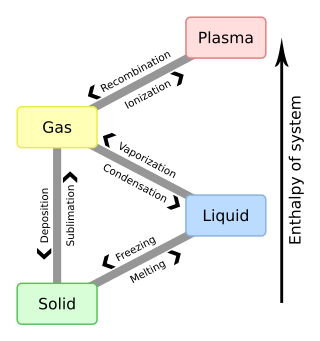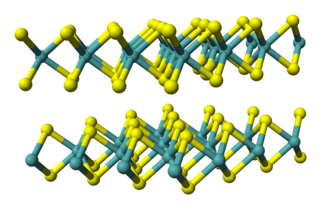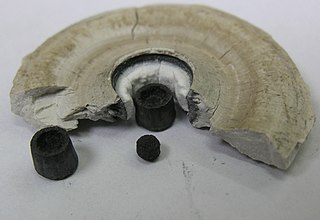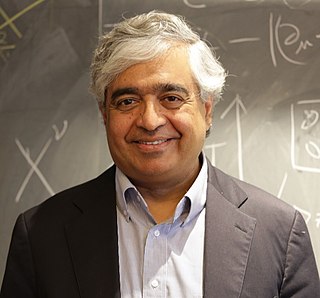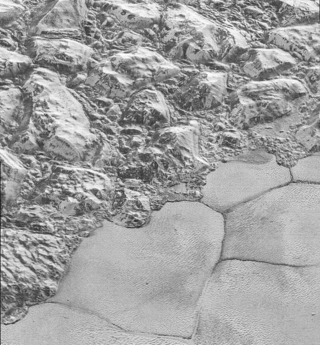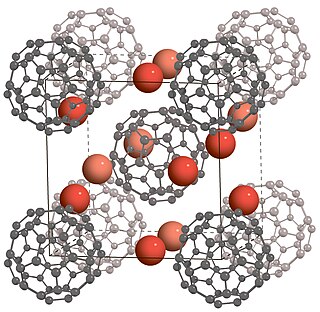Theoretical predictions
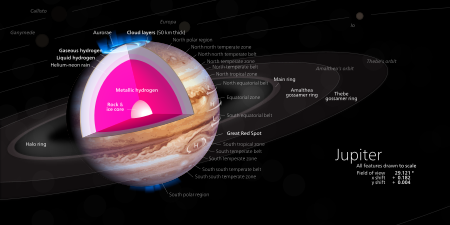
Hydrogen under pressure
Though often placed at the top of the alkali metal column in the periodic table, hydrogen does not, under ordinary conditions, exhibit the properties of an alkali metal. Instead, it forms diatomic H2 molecules, similar to halogens and some nonmetals in the second period of the periodic table, such as nitrogen and oxygen. Diatomic hydrogen is a gas that, at atmospheric pressure, liquefies and solidifies only at very low temperature (20 K and 14 K respectively).
In 1935, physicists Eugene Wigner and Hillard Bell Huntington predicted that under an immense pressure of around 25 GPa (250,000 atm; 3,600,000 psi), hydrogen would display metallic properties: instead of discrete H2 molecules (which consist of two electrons bound between two protons), a bulk phase would form with a solid lattice of protons and the electrons delocalized throughout. [1] Since then, producing metallic hydrogen in the laboratory has been described as "the holy grail of high-pressure physics". [3]
The initial prediction about the amount of pressure needed was eventually shown to be too low. [4] Since the first work by Wigner and Huntington, the more modern theoretical calculations point toward higher but potentially achievable metalization pressures of around 400 GPa (3,900,000 atm; 58,000,000 psi). [5] [6]
Liquid metallic hydrogen
Helium-4 is a liquid at normal pressure near absolute zero, a consequence of its high zero-point energy (ZPE). The ZPE of protons in a dense state is also high, and a decline in the ordering energy (relative to the ZPE) is expected at high pressures. Arguments have been advanced by Neil Ashcroft and others that there is a melting point maximum in compressed hydrogen, but also that there might be a range of densities, at pressures around 400 GPa, where hydrogen would be a liquid metal, even at low temperatures. [7] [8]
Geng predicted that the ZPE of protons indeed lowers the melting temperature of hydrogen to a minimum of 200 to 250 K (−73 to −23 °C) at pressures of 500–1,500 GPa (4,900,000–14,800,000 atm; 73,000,000–218,000,000 psi). [9] [10]
Within this flat region there might be an elemental mesophase intermediate between the liquid and solid state, which could be metastably stabilized down to low temperature and enter a supersolid state. [11]
Superconductivity
In 1968, Neil Ashcroft suggested that metallic hydrogen might be a superconductor, up to room temperature (290 K or 17 °C). This hypothesis is based on an expected strong coupling between conduction electrons and lattice vibrations. [12]
As a rocket propellant
Metastable metallic hydrogen may have potential as a highly efficient rocket propellant, with a theoretical specific impulse of up to 1700 seconds (for reference, the current most efficient chemical rocket propellants have an Isp less than 500 s [13] ), although a metastable form suitable for mass-production and conventional high-volume storage may not exist. [14] [15] Another significant issue is the heat of the reaction, which at over 6000 K is too high for any known engine materials to be used. This would necessitate diluting the metallic hydrogen with water or liquid hydrogen, a mixture that would still provide a significant performance boost from current propellants. [13]
Possibility of novel types of quantum fluid
Presently known "super" states of matter are superconductors, superfluid liquids and gases, and supersolids. Egor Babaev predicted that if hydrogen and deuterium have liquid metallic states, they might have quantum ordered states that cannot be classified as superconducting or superfluid in the usual sense. Instead, they might represent two possible novel types of quantum fluids: superconducting superfluids and metallic superfluids. Such fluids were predicted to have highly unusual reactions to external magnetic fields and rotations, which might provide a means for experimental verification of Babaev's predictions. It has also been suggested that, under the influence of a magnetic field, hydrogen might exhibit phase transitions from superconductivity to superfluidity and vice versa. [16] [17] [18]
Lithium alloying reduces requisite pressure
In 2009, Zurek et al. predicted that the alloy LiH6 would be a stable metal at only one quarter of the pressure required to metallize hydrogen, and that similar effects should hold for alloys of type LiHn and possibly "other alkali high-hydride systems", i.e. alloys of type XHn, where X is an alkali metal. [19] This was later verified in AcH8 and LaH10 with Tc approaching 270 K [20] leading to speculation that other compounds may even be stable at mere MPa pressures with room-temperature superconductivity.

